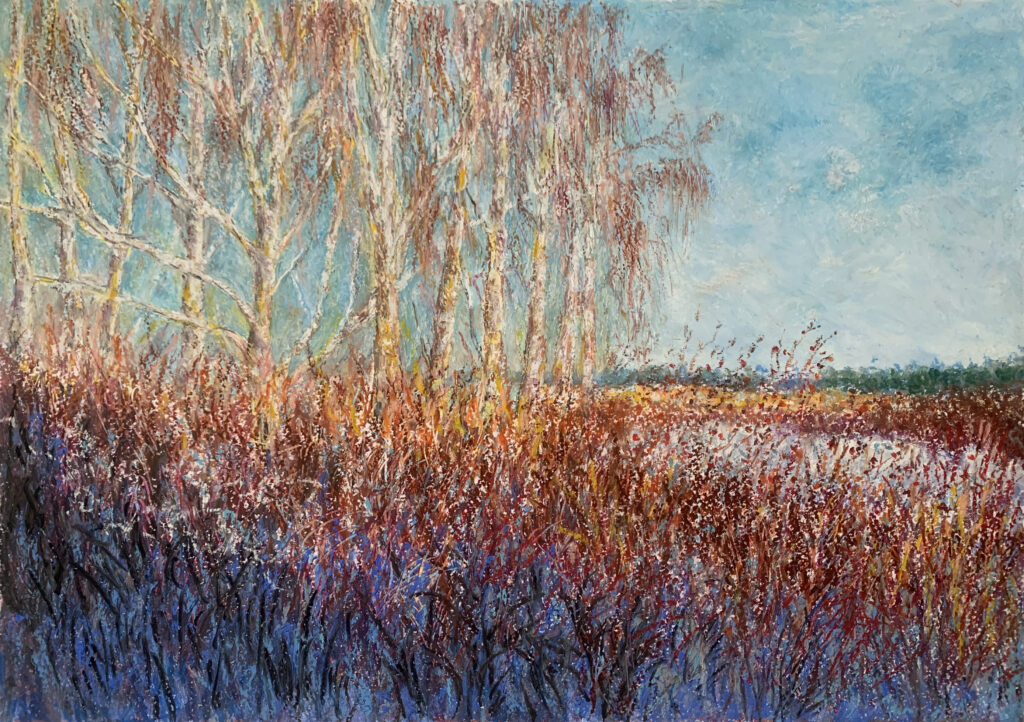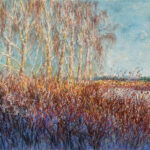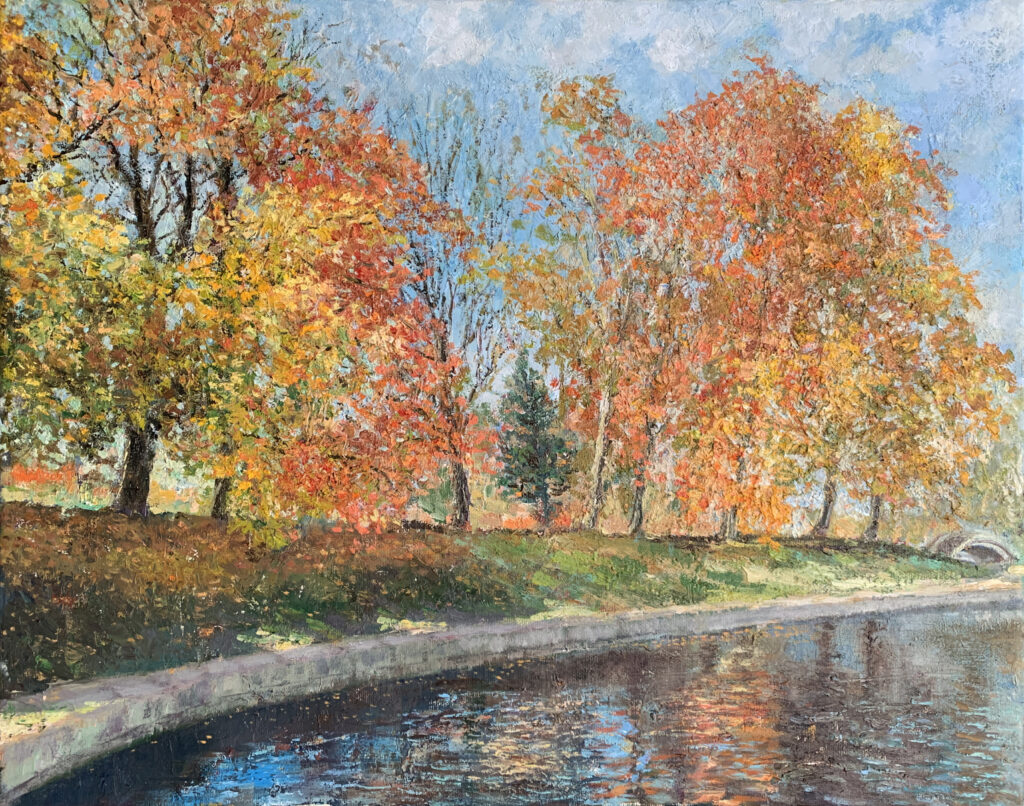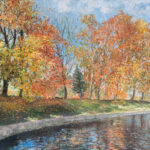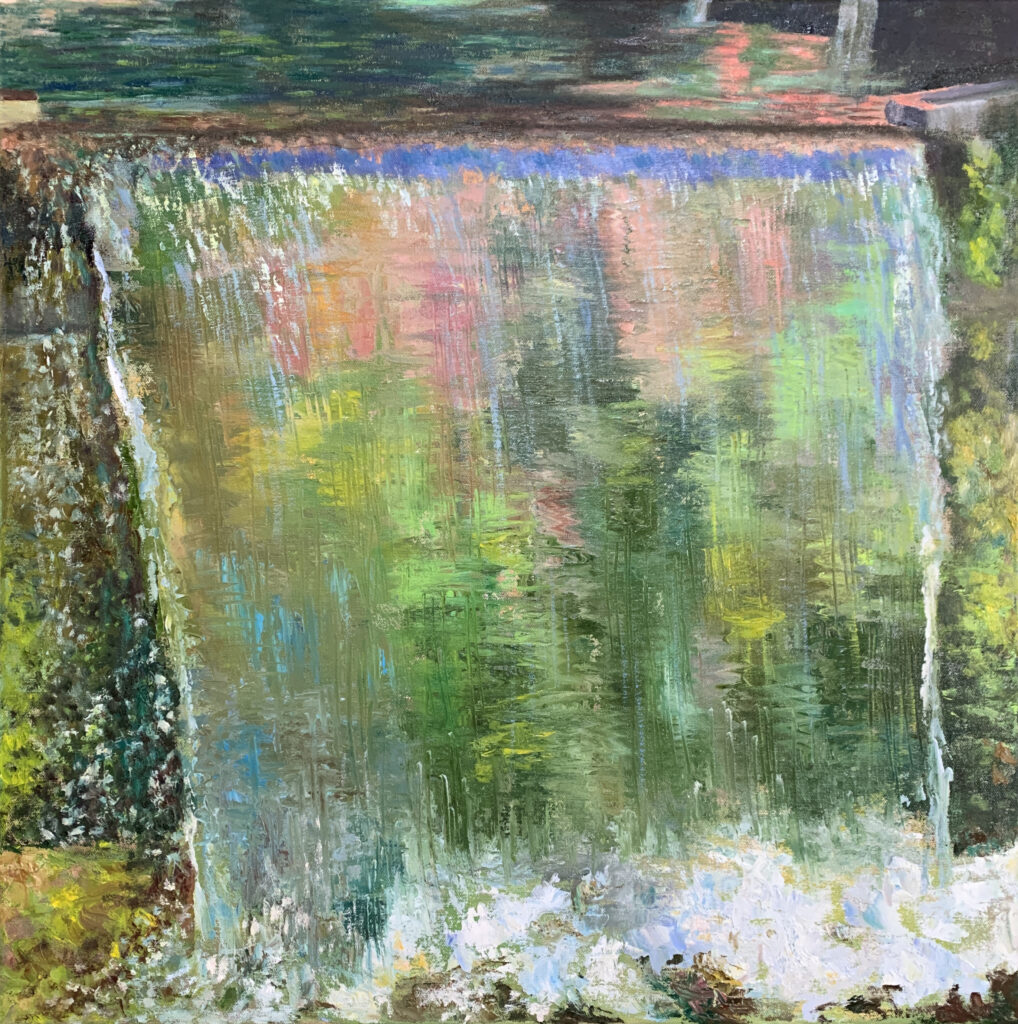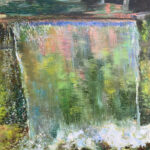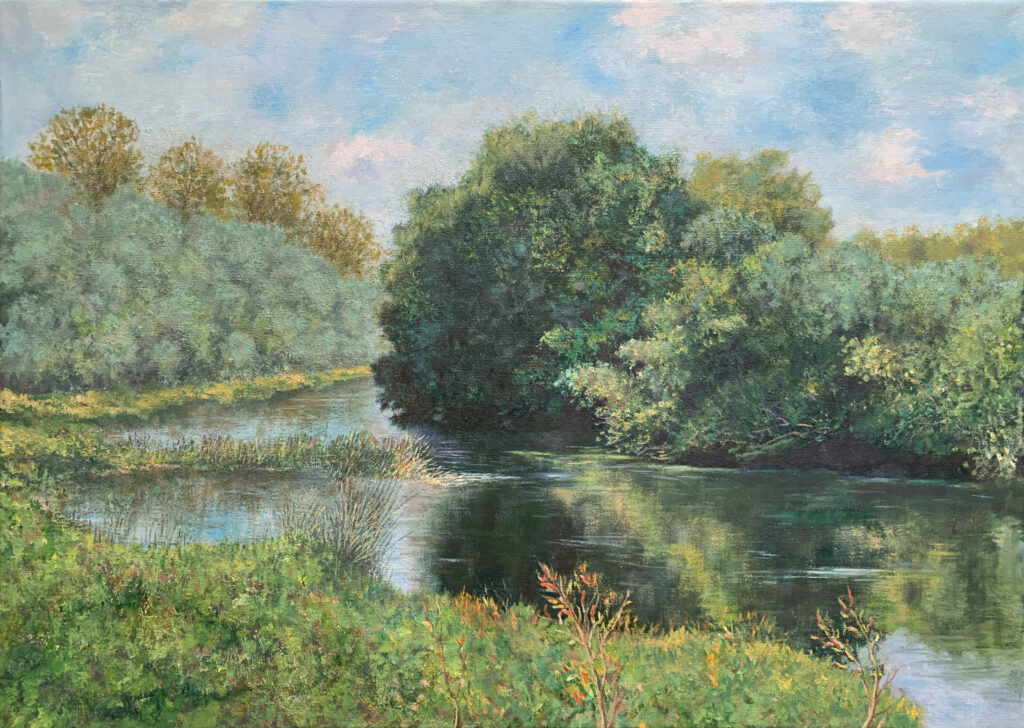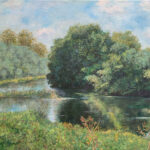Paintings I love
Gustave Caillebotte (French, 1848-1894)
Le pont d’Argenteuil et la Seine
oil on canvas, 65.5 x 81.6 cm.
Painted circa 1883
Private collection

The landscapes that Manet, Monet, Sisley, Renoir, and Caillebotte painted at Argenteuil during the 1870s and 1880s have been widely hailed as a high point of Impressionism. Paul Tucker has identified these artists’ views of Argenteuil as “some of the most novel canvases of their careers” and has asserted, “Their paintings constitute one of the most remarkable bodies of work in the history of art, making Argenteuil synonymous with Impressionism and a touchstone for the development of Western visual culture”. At the end of the nineteenth century, Argenteuil was a burgeoning suburban enclave of around eight thousand inhabitants.
Prominently situated on the right bank of the Seine eleven kilometers west of Paris, the town was a popular destination during the summer months for recreational boaters and weekend vacationers. Caillebotte first visited Argenteuil in 1878, the same year that Monet moved away from the town after seven extremely fruitful years in residence there. In 1881, following his mother’s death and the sale of the family estate in Yerres, Caillebotte and his brother Martial purchased a house directly across the river from Argenteuil in the quieter, more rustic town of Petit Gennevilliers. For the final decade of his career, this stretch of the Seine would be the focus of Caillebotte’s artistic activities. Depicting the highway bridge that connects Argenteuil and Petit Gennevilliers, the present canvas is among Caillebotte’s boldest and most inventive canvases from this period. Anne Distel has written, “With its surprising yet subtle composition and its intense color scheme, this painting is incontestably one of the most successful works executed by Caillebotte on the banks of the Seine”.
The way in which Caillebotte chose to paint the highway bridge, however, was anything but traditional. Indeed, Tucker has described the composition as exemplifying Caillebotte’s “typical imagination and distinctly modernist flair”. Rather than depicting the entire structure from a distance, Caillebotte drew in close to the bridge, concentrating on a single span, which slices across the canvas at a slight angle. To paint the scene, he stood on the Petit Gennevilliers bank, looking toward the houses and factories of Argenteuil. Most likely, he set up his easel on a floating dock near the highway bridge that served as the headquarters of the local boat-keeper; this structure forms the central motif of a canvas that Caillebotte painted in 1886-1887, this time standing on the bridge itself and looking down over the boat basin. In the present painting, Caillebotte has adopted a low, angled vantage point, elevating the bridge so high on the picture plane that its underside is fully exposed. The five steel ribs that form the underpinnings of the span leap across the width of the picture, with the far rib silhouetted against the sky. The horizontal thrust of the bridge is cunningly echoed in the pattern of dark and light bands creating a shadow which plays across the surface of the water.
Tucker lauds the masterful imapsto explaining: “Everything in the picture is subject to the flickering light that Caillebotte so sensitively renders with his broken brushwork and lively palette, just as everything is vulnerable to the possibilities of transformation, whether through the powers of modern art or those of modern life”. Even the bottom edge of the roadbed overhanging the nearest arch is visible for inspection. This dramatic perspective, moreover, is not the only striking feature of the composition; equally inventive is the unexpected cropping. Caillebotte has depicted only the left-hand pier of the span, cropping out its pendant on the right. As a result, the five steel arches appear to leap into a void. Tucker has written, “The only things that hold them up are our belief in the existence of a pier beyond the frame and our trust in Caillebotte’s artfulness”
Source: Christies
Follow my art blog “Paintings I Love” in Instagram, Telegram, Pinterest, Twitter


